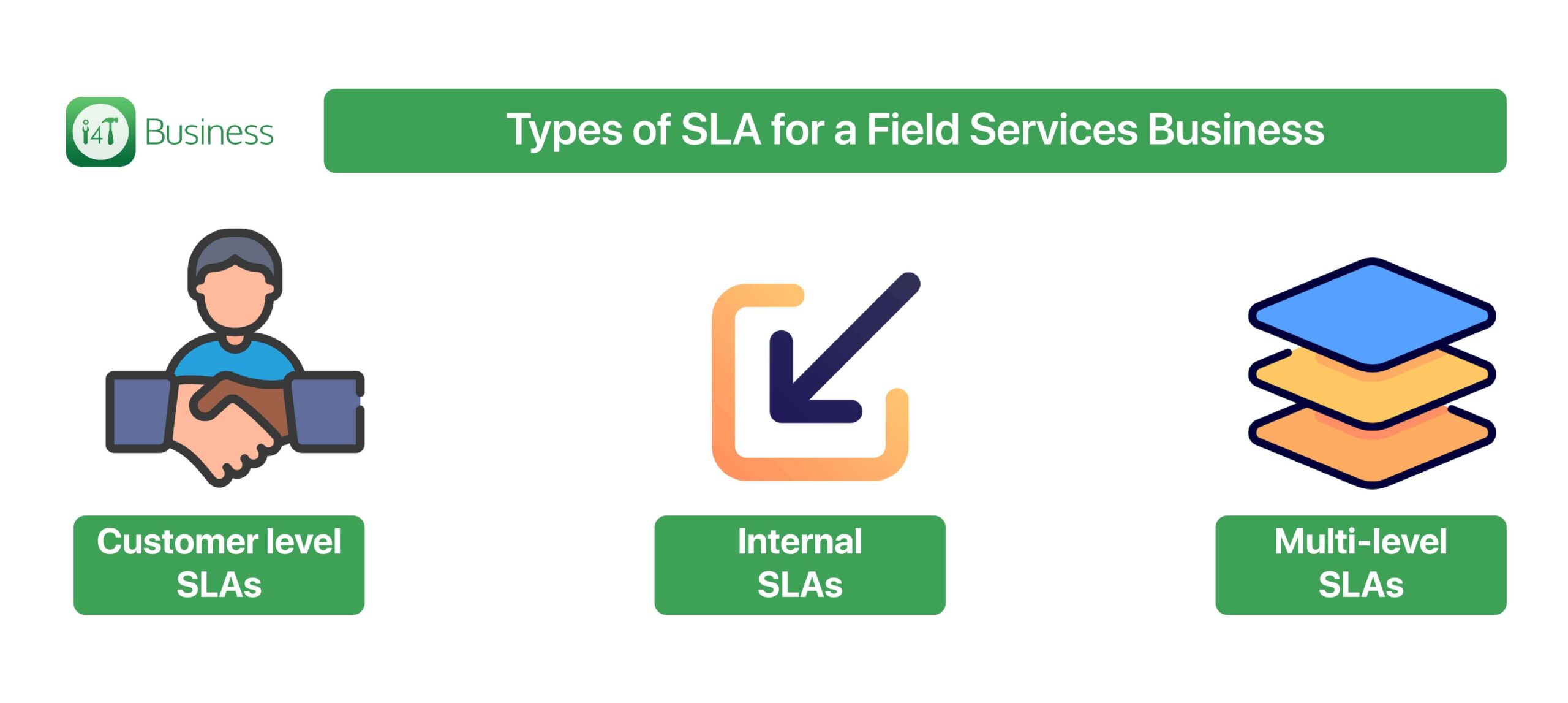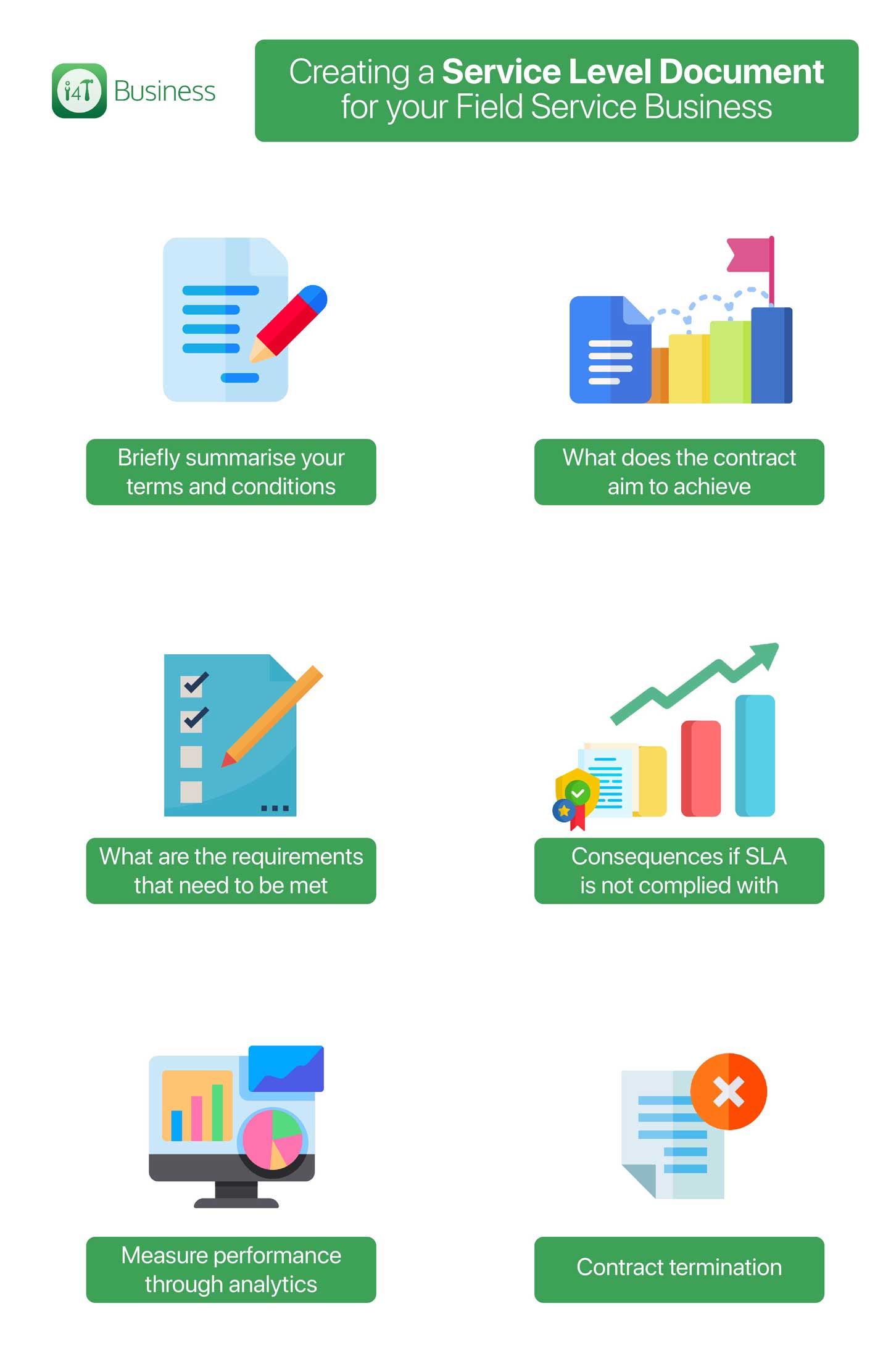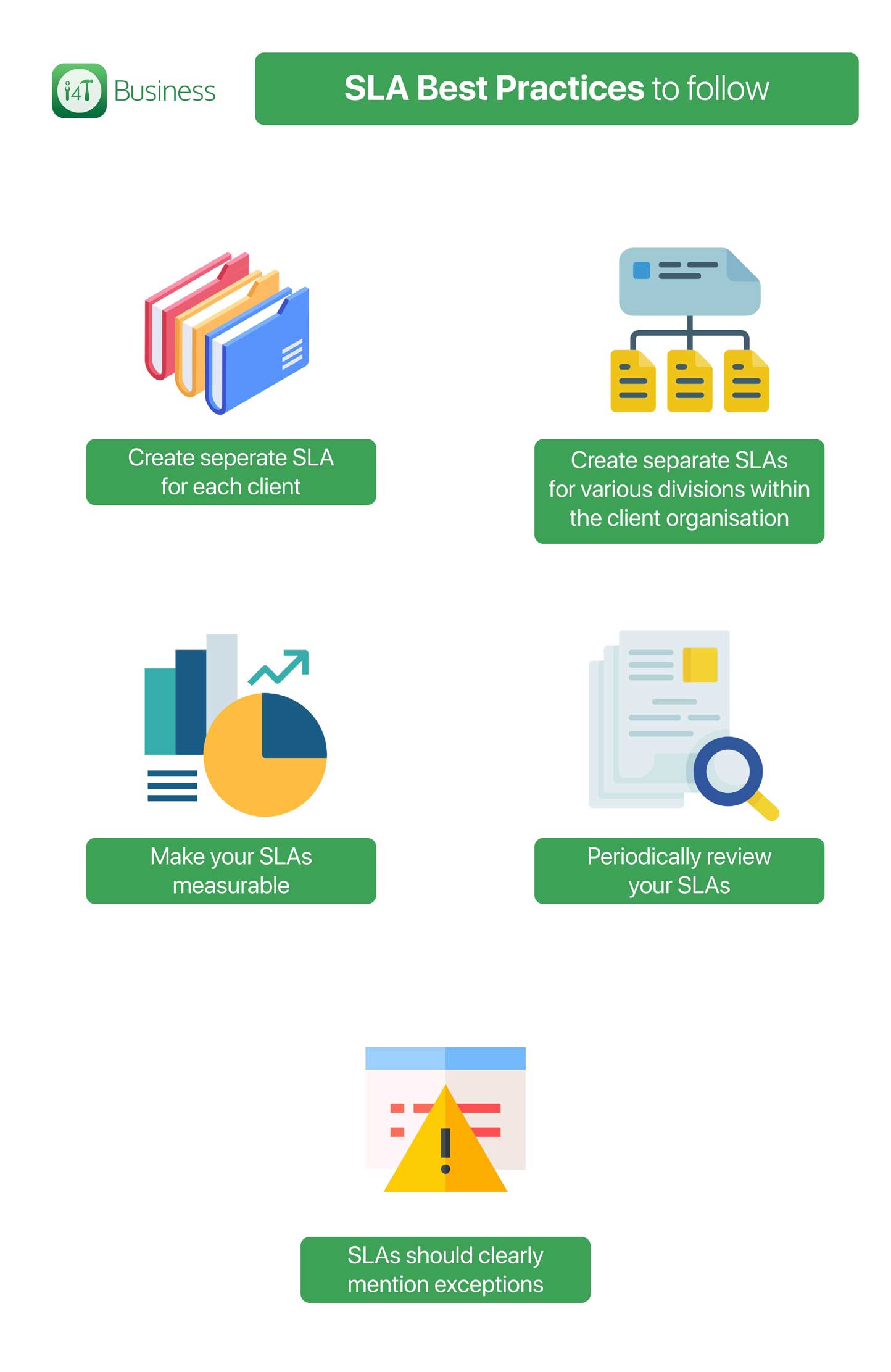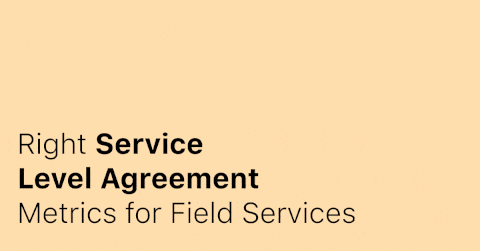SLA Service Level Agreement metrics are the agreed upon criteria outlining the deliverables and level of service that one party expects from the other. These parties include the supplier and the customer.
Not having SLA metrics means that you are leaving money on the table. Having said that, breaching SLAs can have serious consequences for your field services business such as financial penalties.
For example your SLA might state that a certain piece of equipment will not experience a downtime of more than 6 hours. Hence, you are bound to send in a field service technician to fix your client’s asset within that time frame.
In this article, we will look at why a service level agreement (SLA) is important, their benefits, types of SLAs, service level agreement guide, and top Service Level Agreement metrics to consider.
Importance of Service Level Agreement Metrics for a Field Services Business
The right service level agreement not only protects your business from legal trouble but also helps your business compete with others.
Businesses that can demonstrate their ability to provide a reliable service, ensure that they win more contracts.
Property maintenance management companies are looking for service suppliers that are not only willing to take more responsibility but also have a great past SLA compliance rate, with as few breaches as possible.
Service Level Agreement metrics ensure that you are not just making empty promises but you have a proven track record of completing them consistently over the years.
Benefits of SLAs for Field Service Businesses
Some of the benefits that the right service level agreements metrics can provide to Field Service Businesses include:
- A complete match between customer requirements/expectations with service delivery.
- Greater protection for both clients and the service supplier. Clients are protected against low-quality work while businesses are protected against expectations outside the scope of SLAs.
- Enhanced documentation ensures well-guided processes and that best-practices are always followed.
- With an SLA in place, both parties are on the same page. All interactions happen according to approved guidelines. Service management and customer management is made simpler and effective.
Types of SLA for a Field Services Business
Customer level SLAs
Internal Service Level Agreement
Multi-level SLAs

Creating a Service Level Document for your Field Service Business

Briefly summarise your terms and conditions
What does the contract aim to achieve
What are the requirements that need to be met
Consequences if SLA is not complied with
Measure performance through analytics
Contract termination
More often than not, miscommunication between the parties can result in unwanted consequences. Make sure you clearly outline your responsibilities and that of your client and mention that any violation of those might result in the termination of the contract.
Make sure all parties involved carefully read, understand and sign the contract prior to initiation of any work order.
Top Service Level Agreement metrics to consider
With Field Service Suppliers having more data at their disposal than ever before, they can set up Key Performance Indicator metrics for their teams and their business in general. These metrics come in handy when writing SLAs for a new project or client.
Some of the top metrics Field Service Businesses need to consider when documenting their SLA document include:
- Mean-time to complete: How long does it take to complete each job.
- Average response time: How quick is your team of technicians to respond to a breakdown.
- Average Repair time: How quickly was the technician able to repair a breakdown on average.
- First time fix-rate: How often do your technicians fix the issue the first time they visit a client’s property?
- Number of repeat visits: The number of visits it took to fix an issue. The lower this number the better with the exception of scheduled maintenance.
- Uptime: What percentage of the productive time does your client’s system stay up and running, without any error.
- Technician utilisation: Quality of output from your team during the billable hours.
- Percentage of preventive maintenance to reactive maintenance: This metric is used to manage resources and allocate inventory.
- SLA Compliance rate: Percentage of time the service delivered is in compliance with the SLAs.
How to avoid a Service Level Agreement Breach
No matter how meticulously you carry out your work orders, an unexpected event might result in your response times exceeding or compromise service quality. So much so, that you may end up breaching your service level agreement.
The best way to avoid an SLA breach is to use a Field Service Management software such as i4T Business to help you track your SLAs.
This will help:
- Service technicians know exactly how much time is left to fix an issue.
- Schedule maintenance work for technicians to perform the fix on time
- Send notifications to field workers letting them know of a scheduled task
- Track work progress at a glance with real-time visibility in a dashboard view
- Extend visibility to the customers by keeping them in the loop on work status.
- Gather analytics from past work orders to better understand bottlenecks, possible risk factors and completion rates.
- Create and write better SLAs for future projects using the insights gained through the analytics.
With the right plan in place and a Field Service Maintenance software to help you out, you will be able to not just meet your SLAs but also avoid potential disasters down the line.
SLA Best Practices to follow

1. Create seperate SLA for each client
2. Create separate SLAs for various divisions within the client organisation
3. Make your SLAs measurable
Without collecting the right data before, during and after service delivery it is not possible to gauge performance. You SLAs must be specific, measurable, achievable, relevant and timely.
By setting up the right goals you are able to compare performance against your service level agreement.
4. Periodically review your SLAs
5. SLAs should clearly mention exceptions
Wrapping up
The whole idea behind developing Service Level Agreements metrics is to ensure that you provide your clients with the best possible service, so they keep coming back.
Try to offer solid benefits in your SLA document such as shorter response times, competitive pricing and accurate maintenance scheduling deadlines. These benefits will help increase customer satisfaction and benefit your bottom line in the long run.
i4T Business can help you track your Service Level Agreement metrics with utmost precision so that you deliver an exceptional customer experience every time! Signup to get started today!

With our cutting-edge technology and in-depth knowledge of how the Field Service Management sector operates, the i4TGlobal Team loves to share industry insights to help streamline your business processes and generate new leads. We are driven by innovation and are passionate about delivering solutions that are transparent, compliant, efficient and safe for all stakeholders and across all touch points.




